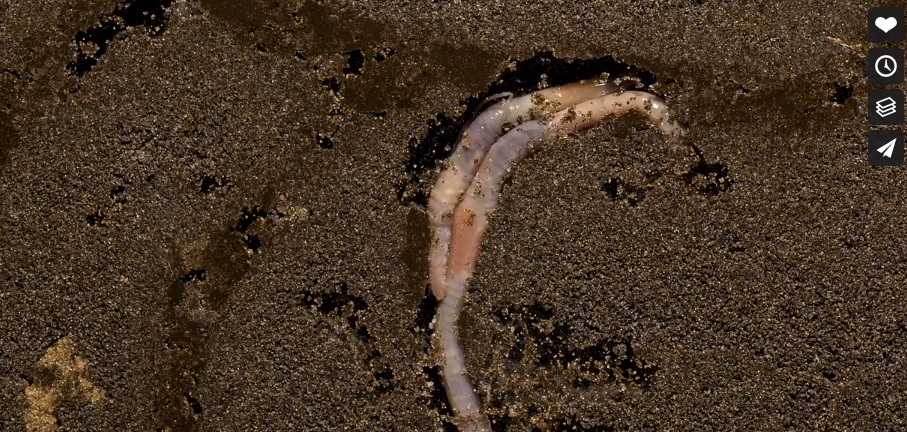Worms live underground and we’ve never been able to see what they get up to there. Up to now. Micro photographer and artist Wim van Egmond has published his time-lapse film about the life of worms, Three earthworm species, on Vimeo. Van Egmond has been working with soil scientists at WUR since 2014, to make it possible to see underground worm activity. But the full life cycle of worms, including sex and what follows it, has never been revealed before.
Lightning speed
Professor and worm expert Jan-Willem van Groenigen is wildly enthusiastic about the video. ‘I have tweeted about it and that tweet has already been looked at 14,000 times. The video is spreading at lightning speed through the soil Sciences community. It is highly appealing and that is 90% down to the work of Wim.’ In his time-lapse film, Van Egmond shows us the lives of three species of worm.
‘Those worms represent the three main groups in the worm kingdom,’ explains Van Groenigen. ‘They can be distinguished by their eating and tunnelling behaviour. They vary in whether they eat leaves, the depth at which they live and whether they live in permanent tunnels.’ The films show the beauty of these differences. But the most extraordinary footage is that of the mating Aporrectodea caliginosa, A species that lives just under the surface and digs lots of temporary tunnels.
Happy
‘The caliginosa is very active and turns over all the soil. This worm is perfectly happy in captivity,’ says Van Groenigen. It is so at ease, in fact, that it succeeds in mating. ‘This is the first time we’ve been able to observe this in the soil. The worm then digs a tunnel, where it lays a cocoon (its ‘egg’). It places it with precision at a corner so that the cocoon cannot fall and tucks it in very carefully.’
We had no idea they did it like this
Professor of Soil Biology Jan-Willem van Groenigen
‘This really is a revelation. We had no idea they did it like this. Van Groenigen makes no secret of his enthusiasm. ‘This is true maternal love. He or she (since worms are hermaphrodites) really pays attention to that cocoon. This is a very nice discovery for worm specialists.’ The baby worms emerge into the world two months later.
Discovery
Two months in this case, at least, because it can go faster or more slowly. Van Groenigen: ‘That is what we would still like to study: what are the decisive factors for the hatching of the cocoon? There is still so much to discover. We’ve got lots more ideas for videos; we are far from finished.’ The time-lapse videos can be seen on Vimeo, where the super-sharp images come into their own. Van Groenigen wants to put them on YouTube soon too.
[streamer] We had no idea they did it like this Professor of Soil Biology Jan-Willem van Groenigen

 Photo Wim van Egmond
Photo Wim van Egmond